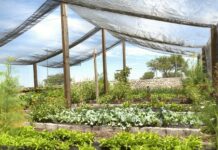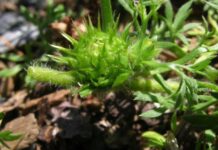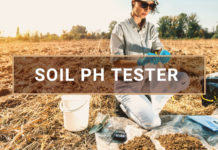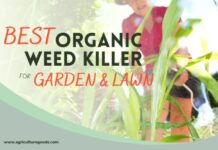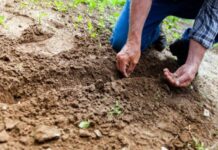
One of the most important factors in growing healthy plants is getting the right soil, but how do you know which one is right? Two of the most common forms of soil are potting soil and topsoil, but which one do you need?
Let’s take a deep dive into the difference between potting soil and topsoil.
What is potting soil?
Potting soil is a collective term for different kinds of soil with each their own composition and specific structure, especially for plants in pots and flower containers. Potting soil is lightweight, contrary to for instance the heavier dark garden soil.
 Ingredients
Ingredients
- Topsoil is, as the name implies, the top layer of soil. It’s dirt, and it’s dense and thick when wet. This soil may be as thin as a few inches or as dense as a foot thick. The majority of topsoil is contained in nature. Sand, clay, and even manure are common ingredients.
- It can contain weed seeds, bacteria, and fungus due to its natural state. It isn’t particularly suitable for planting, but it is an excellent soil conditioner.
- Potting soil, on the other hand, is made up of a number of ingredients and is ready to use. Potting soil, believe it or not, does not contain any soil. Perlite, sphagnum moss, and coir are widely used. This mixture is suitable for establishing roots in plants.
- The most important thing to remember about potting soil is that when it comes time to plant, you don’t need to apply anything to it. The fertilizer in most blends is enough to last a few months. It’s also well-blendable and allows for sufficient aeration.
When to Use Potting Soil
The name comes from the fact that potting soil is made specifically for growing plants in containers or pots. One of the reasons for this is that it is designed to maintain moisture, making it suitable for container gardening.
Another advantage of potting soil is that it is sterilized, which means you won’t have to worry about weed seeds sprouting in your containers. It’s also designed to be light and non-compact, making it simple for roots to pass through.
Potting soil, on the other hand, is not ideal for use in a garden or flowerbed. It drains well and can dry out too easily in an open space due to its lightness.
When growing plants in pots or hanging baskets, use potting soil. Potting soil can be used in almost any small container that will confine the plant’s growth to a small region.
Also, See The 10 Best Soil Test Kits in 2024 – Buying Guide
How to Use Potting Soil
Potting soils come in a variety of formulations, so make sure you choose the correct one for the plants you want to hold. There are potting soils for houseplants and potting soils for succulents, for example. For the best results, you must use the correct form.
Some potting soils already contain fertilizer, while others do not. Be sure to read the label carefully and, if necessary, apply more slow-release fertilizer. As required, water your plants. Since most potting soil dries out easily, make sure your plants are getting enough water.
Discard any excess potting soil at the end of the season. The nutrients and fertilizer decay over time, so it doesn’t usually hold well from year to year. To ensure that your plants get the nutrients they need, add fresh soil to the plants that have already been potted.
Potting Soil
Pros:
- You won’t have to think about weed seeds or disease spreading because the potting soil is sterilized.
- There are several different types of potting soil available, so you can find the right one for your plant.
- You can easily customize your potting soil by mixing in different ingredients.
- It’s simple to make your own potting soil with your favorite ingredients, such as perlite, sand, peat moss, and more.
- The majority of potting soil comes with fertilizer and is designed to keep your plants alive for up to six months.
Cons:
- Your plants can get very little support from the potting soil alone. This is why it is often sold with additional fertilizer. If your potting soil does not already contain fertilizer, add some organic compost or a slow-release fertilizer.
- To keep topsoil loose and give your plants the help they need to grow strong and safe, you should replenish it every year.
What is Topsoil?
Topsoil is the upper layer of soil, usually between 2 to 8 inches in depth, that contains most of the ground’s nutrients and fertility. If you have poor soil in your garden and want to begin planting veg or laying turf, buying fresh topsoil will ensure your plants will get a great start.
 When to Use Topsoil
When to Use Topsoil
- Using topsoil if you’re planting outside in the yard. As previously said, it works well as a soil conditioner, so you can use it to boost the natural dirt and soil in your yard before planting.
- In your outdoor garden bed, mix topsoil and soil in equal sections. This mixture not only provides natural nutrients and minerals to the soil, but it also aids in drainage.
- If you need to level rough spots in your yard or flatten the ground under patio stones, topsoil is a good option.
Also, See How Does Soil pH Affect Growing Plants?
How to Use Topsoil
Add about two inches of topsoil to the surface of your garden when it’s time to plant. Then mix it in with the soil and gravel under it. Blending is a crucial part of this operation. Drainage issues will arise if the mixture is not thoroughly mixed.
Topsoil is rich in nutrients and can help to enrich your backyard soil, but it is not the same as fertilizer. To get the best results, have your soil checked and use the right fertilizer.
Topsoil
Pros:
- While topsoil is low in nutrients, it holds water well and contains a variety of microorganisms that aid in plant development.
- Since topsoil is so good at preserving water and nutrients, it encourages rapid growth. It may also assist plant survival in difficult conditions such as drought.
- Powerful root growth is encouraged by topsoil, which helps to secure the soil and avoid erosion.
Cons:
- When topsoil is watered a few times or after a heavy rain, it may become hard and compact. It’s thick, and under certain conditions, it can stifle seedling growth.
Conclusion
When you understand what topsoil and potting soil are and how they can be used, the variations between the two are fairly clear. Outside, topsoil is used to build raised garden beds or to prepare the top few inches of dirt for planting.s
Potting soil is designed to be used in pots and other small containers, as the name suggests. To promote good plant growth, read the label on the potting soil mix you buy carefully. You will need to add fertilizer.
Also, See The Complete Guide on Crops Suitable for Black Soil

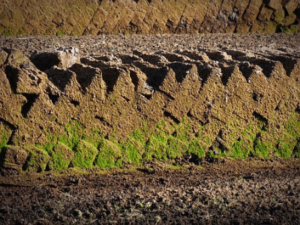 Ingredients
Ingredients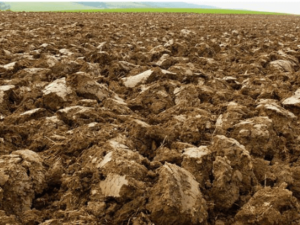 When to Use Topsoil
When to Use Topsoil